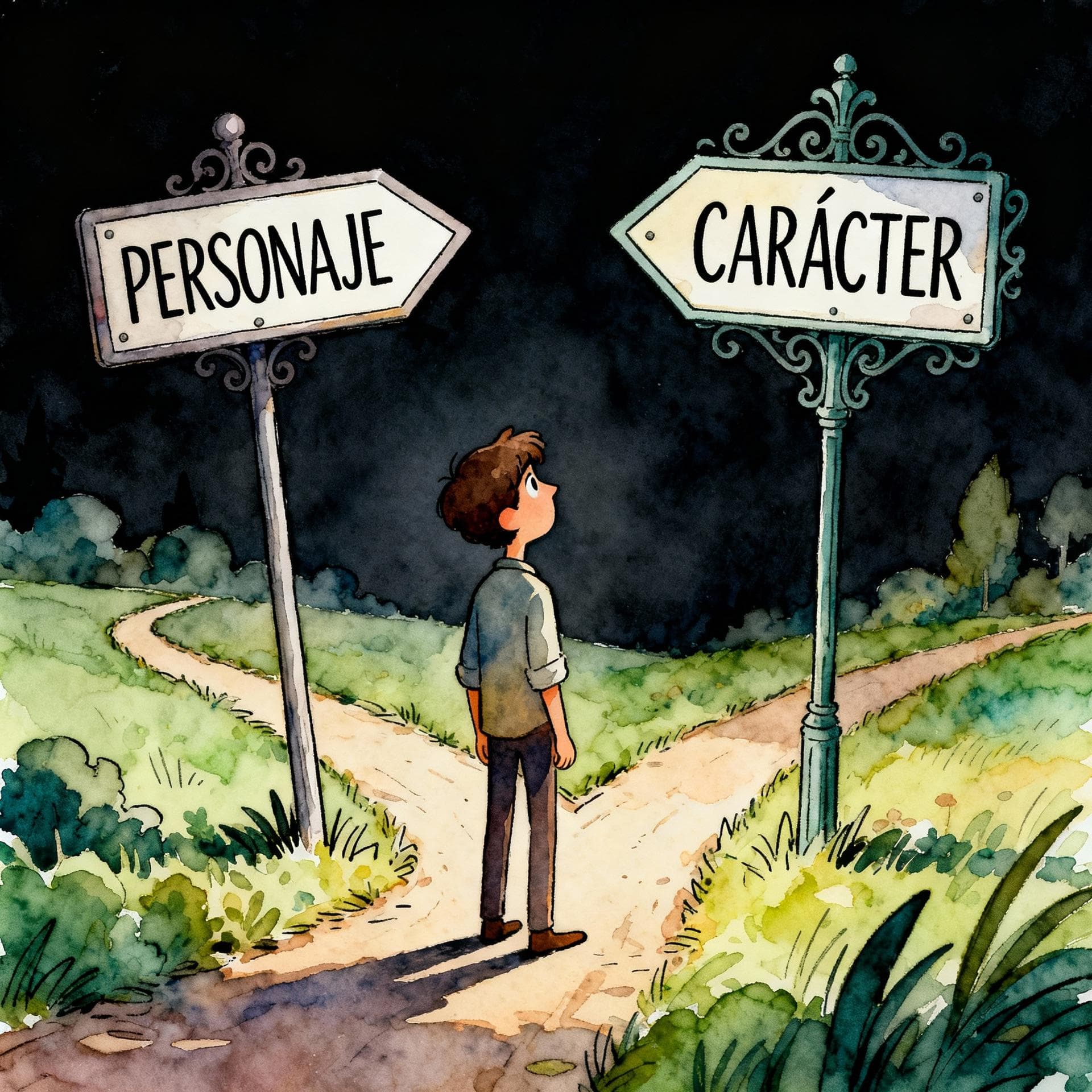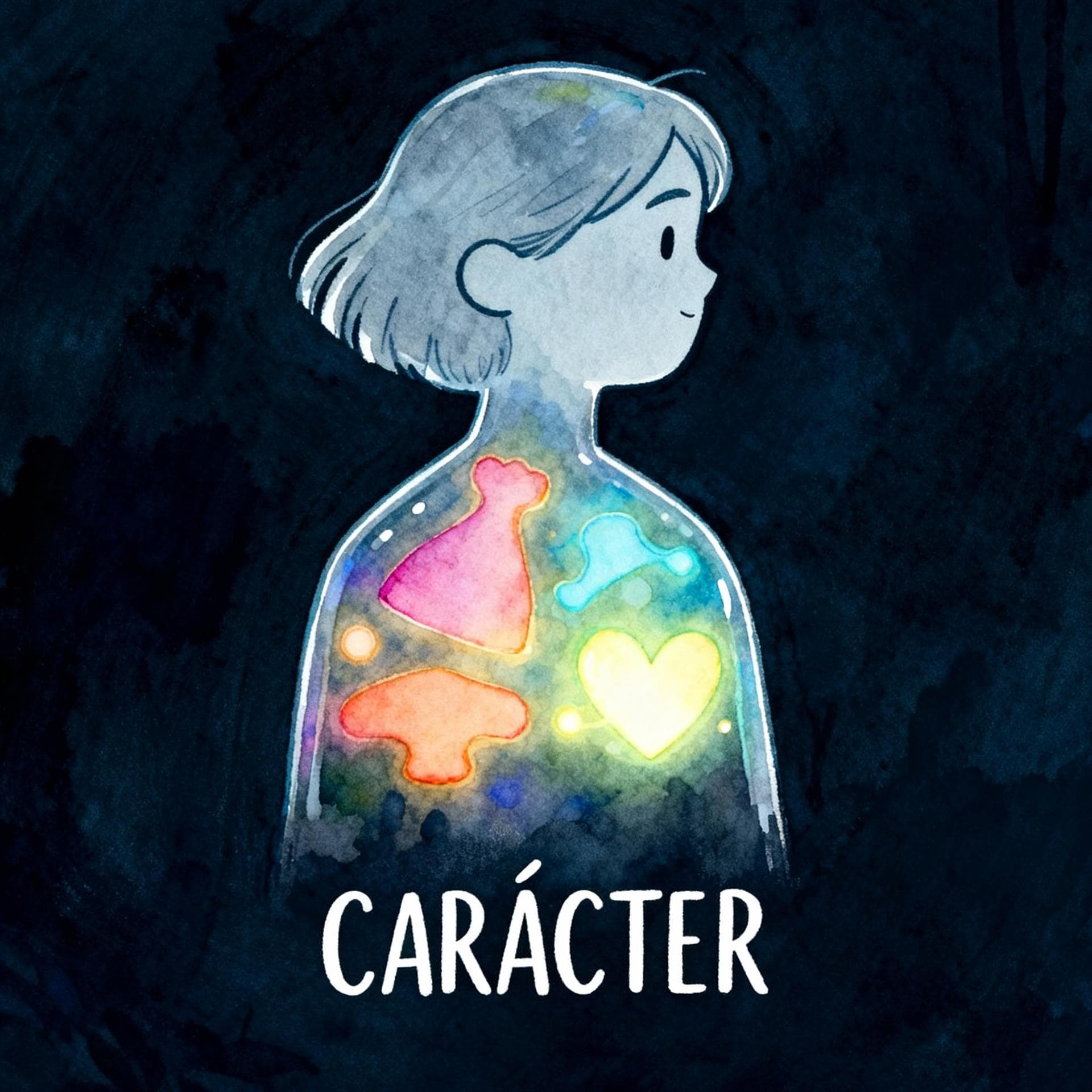You’re passionately describing your favorite TV show to a Spanish-speaking friend. You want to talk about the main character, the hero of the story. You search for the right word... is it carácter or personaje?
It’s a classic mix-up for Spanish learners. These two words look and sound similar to the English "character," but they are definitely not interchangeable. Using the wrong one can lead to some confusing sentences!
But don't worry. Once you see the difference, you'll never mix them up again. Let's dive in and untangle these two terms once and for all.

Personaje: The Star of the Show
First up, let's talk about personajecharacter (in a story).
This is the word you use when you're talking about a fictional character in a story. Think books, movies, TV series, plays, and even video games. If it's a person (or creature!) who plays a role in a narrative, they are a personaje.
Here are some examples to make it crystal clear:
- Mi personaje favorito de La Casa de Papel es Nairobi. (My favorite character from Money Heist is Nairobi.)
- El autor creó un personaje muy misterioso y complejo. (The author created a very mysterious and complex character.)
- ¿Quién es el personaje principal en Don Quijote? (Who is the main character in Don Quijote?)
Easy Memory Trick
To remember personaje, notice that it looks a lot like the English word "person." A personaje is simply a person in a story!
Carácter: The Personality Within
Now, let's meet caráctercharacter (personality/nature).
This word refers to a person's personality, nature, or temperament. It’s about the qualities that make someone who they are—their moral fiber, their disposition, their inner self. It's what's inside a person (or even a place!).

Check out these examples:
- Mi abuela tiene un carácter muy fuerte y decidido. (My grandmother has a very strong and determined character/personality.)
- Es un hombre de buen carácter, siempre amable con todos. (He's a man of good character, always kind to everyone.)
- El carácter de esta ciudad es muy artístico y bohemio. (The character/nature of this city is very artistic and bohemian.)
Watch Out!
The word carácter has another common meaning: a single letter, number, or symbol used in writing or computing (like a character in a password). The context usually makes it obvious which meaning is intended!
Side-by-Side: The Ultimate Showdown
The core difference is simple: personaje is who is in the story, and carácter is what they are like.
Let’s see them in action together:
El personajecharacter (in a story) de Sherlock Holmes tiene un caráctercharacter (personality) muy peculiar. (The character of Sherlock Holmes has a very peculiar personality.)
See how that works? One is the fictional being, the other describes his personality.
Let's use our Comparison Slider to see a common mistake and how to fix it.
Drag the handle to compare
Test Your Knowledge!
Ready to see if you've got it? Try this quick quiz!
Which word completes this sentence? 'Mi hermana tiene un ___ muy alegre.'
Great job! How about unscrambling a sentence to really lock it in?
Arrange the words to form a correct sentence:
The Final Word
Mastering the difference between personaje and carácter is a fantastic step toward sounding more natural in Spanish. Just remember this simple rule:
- Personaje = A person in a story.
- Carácter = A person's inner character traits or personality.
Keep this distinction in mind, and you'll be describing your favorite heroes and your best friend's personality with perfect precision. ¡Sigue aprendiendo! (Keep on learning!)
